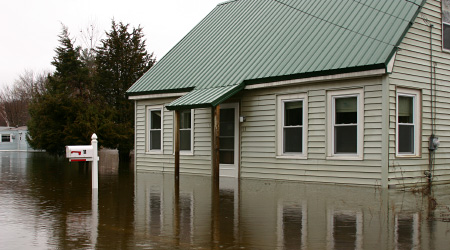Turned Down for Refinancing?

With mortgage rates once again falling to new record lows, many homeowners are looking to refinance their mortgages. But what can you do if you've already tried to refinance and been turned down? Here are several of the most common reasons people are turned down when trying to refinance, and what you might be able to do to overcome them.
Lack of home equity
This isn't necessarily about being underwater, or owing more on your mortgage than your home is worth. In many cases, it's simply about not having enough positive equity for lenders to be willing to refinance you. Just as lenders require a down payment on a home purchase mortgage, they want to see that you have a bit of your own money tied up in the home before they'll approve a refinance.
Bring more money . The first and simplest way to fix this is just to bring more money to the table. If your home is worth $200,000, you owe $190,000 on your mortgage and your lender requires at least 10 percent equity to refinance, you can simply bring an additional $10,000 to the table to reduce the loan amount to $180,000.
Of course, coming up with that money may not be easy and you still have to account for closing costs, although those can often be rolled into the loan.
Try a HARP. The federal Home Affordable Refinance Program is expressly designed to allow homeowners in low or negative equity refinance their mortgages. There were a number of changes made to the program this year that make it easier for more borrowers to qualify, so if you previously applied for a HARP refinance and were turned down, it's worth trying again.
To qualify for HARP, you can't have more than 20 percent equity in your home, or what's known as an 80 percent loan-to-value (LTV) ratio. A previous limit on how far underwater a borrower can be has been lifted, so you can still refinance even if your home is worth only half of what you owe on your mortgage, or even less. Be aware that some lenders may have their own LTV limits on what they'll accept for HARP refinances, however.
To qualify for a HARP refinance, you must have a mortgage that is backed by either Fannie Mae or Freddie Mac, and which was taken out prior to Jan. 1, 2009. However, you do not have to refinance with the same lender you have now - many lenders are now willing to do HARP refinances on loans currently serviced by other lenders.
Try an FHA If you're in low equity, or slightly underwater, you might also consider refinancing through an FHA mortgage. FHA mortgages require a down payment, or equity, of only 3.5 percent, so the equity demands or amount of additional money you'd need to bring to the table is less than on other types of mortgages. FHA rates are very competitive compared to most other types of home loans, but be aware that you also have to pay for special mortgage insurance on FHA loans.
Poor credit history
If you're turned down because of bad credit, your only choice is to improve your credit. simple enough.
The good news here is that it's not as difficult or as long a process as you might think. Unless it's a major blot on your credit record, most blemishes have little impact on your credit after two years or so.
If you focus on paying your bills on time, your credit should improve on its own. The Federal Reserve has signaled its intention to keep rates low for several more years, so you should have time.
If you have a major stain on your credit, such as a bankruptcy or serious delinquency (a bill 90 days or more past due), you've got another problem. Those tend to stay on your credit report much longer, up to seven to 10 years for a bankruptcy. Unfortunately, in those cases there's not much you can do other than wait it out.
Not enough income
This is often not so much a matter of too little income, but too much debt. Lenders typically will require your monthly debt load be no more than 43 percent of your gross monthly income. Monthly mortgage payments, including property taxes or homeowner's insurance, are typically limited to about 30 percent.
The first thing you can do, of course, is reduce your debt by paying off credit cards and other loan-type debt. Of course, that can take some time, so you might consider tapping other sources to pay those down, such as savings, borrowing from a retirement account, liquidating assets or borrowing from relatives. Some of these, particularly borrowing from a retirement account, can have costs of their own, but might be worth considering if you can save enough by refinancing.
Try another lender
Although we're listing it last, this may be the best think you can do when you've been turned down for a refinancing, or when a lender won't offer what you think is an attractive rate or reasonable closing costs. All lenders have their own mortgage loan programs, and rates and fees can vary significantly among them.
Don't assume that the biggest lenders will have the best rates - it's not like Wal-Mart out there. Depending on your situation, a smaller lender or credit union may be a better fit for your needs.
Finally, if you're having trouble qualifying, consider a mortgage broker. Brokers don't make loans themselves, but help arrange mortgages on a borrower's behalf, working with a variety of lenders to find the right one that meets a borrower's needs. They can be particularly helpful if there are unusual features about your loan - such as if your home is a unique property that makes some lenders wary, or if you have multiple or irregular sources of income.
Elsewhere on StockMonkeys.com







